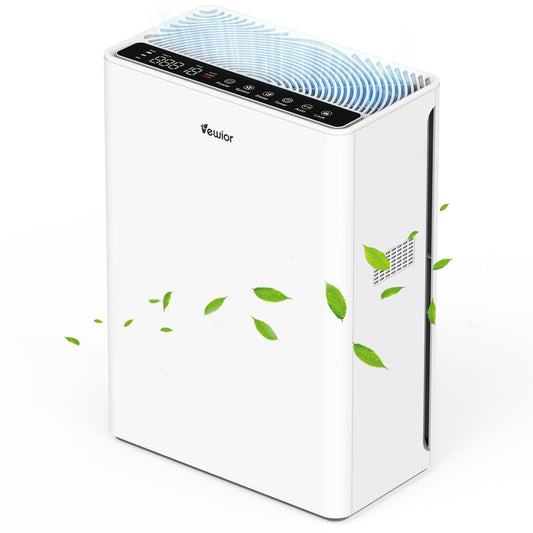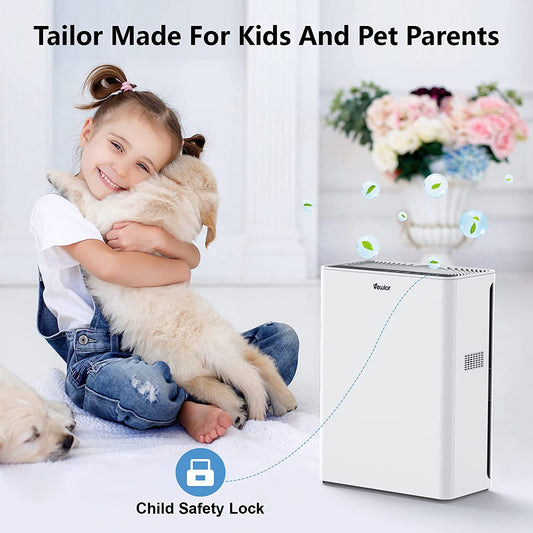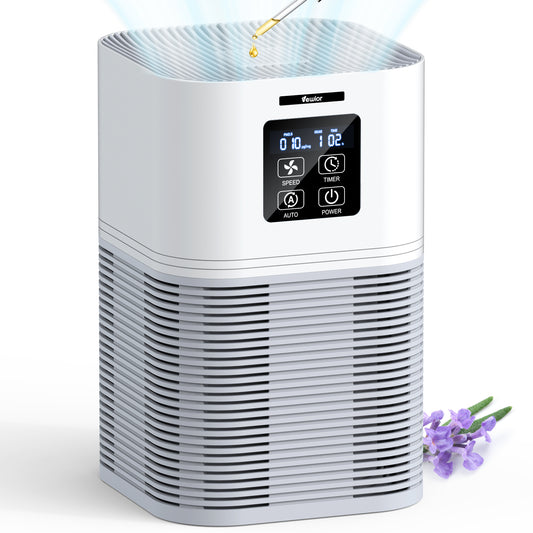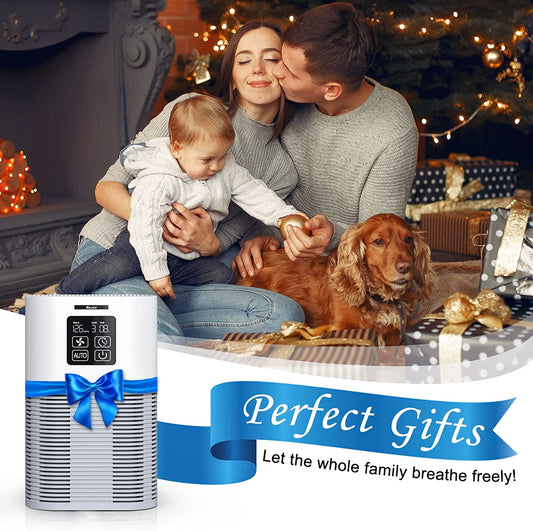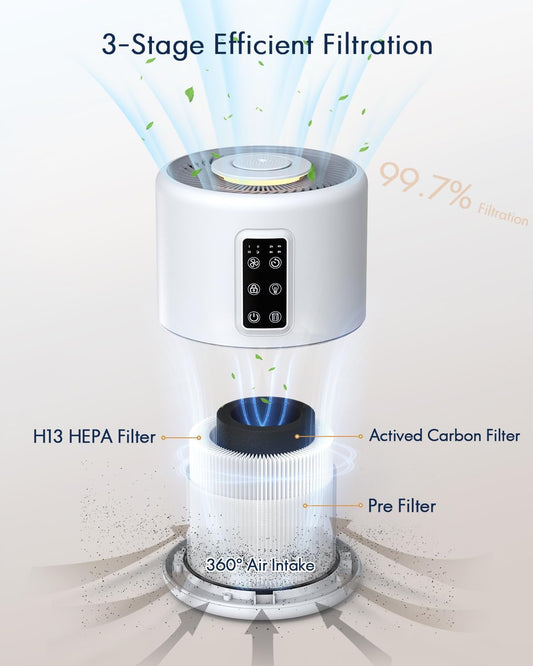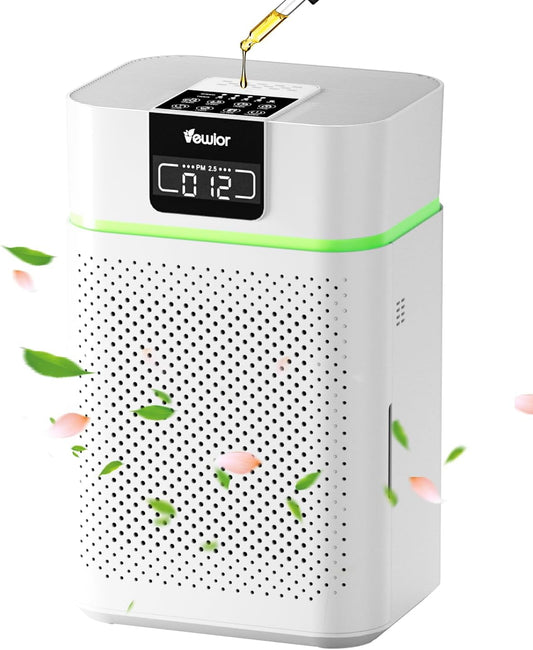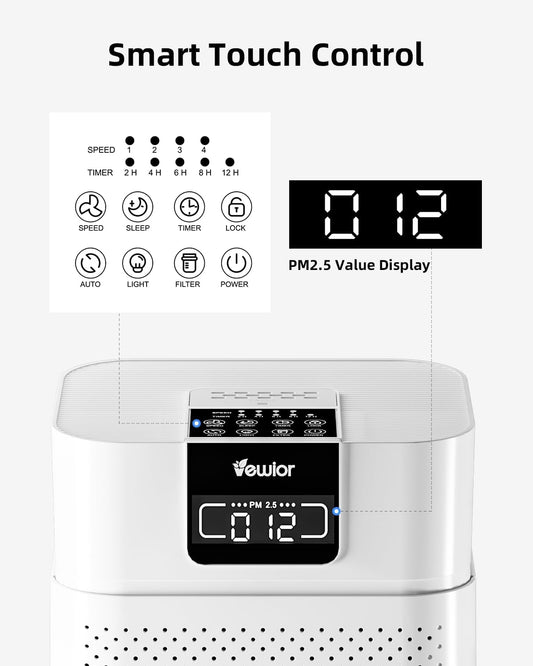Do you know what's lurking in the air you breathe at home? Even if your home looks clean, there could be invisible pollutants in the air, such as dust, pollen, and pet dander. This can cause allergies, asthma, and other respiratory problems. But don't worry, there's a solution - air purifiers. In this blog post, we'll explore how air purifiers work and their benefits for improving indoor air quality. We'll also delve into the different types of air purifiers, how to choose the right one for your needs, and tips for maintaining your air purifier. By the end of this post, you'll have a clear understanding of how air purifiers can help you breathe cleaner air at home.
The benefits of using an air purifier at home
Indoor air pollution is a major concern, especially for people with allergies, asthma, or other respiratory problems. Air purifiers can help alleviate symptoms by removing pollutants from the air. They work by circulating air through a filter that traps particles and pollutants, which are then removed from the air.
One of the main benefits of using an air purifier is reducing allergens in the air. Allergens such as pollen, pet dander, and dust mites can cause symptoms like sneezing, coughing, and itching. An air purifier with a HEPA filter can capture these particles and prevent them from circulating in the air. This can be especially helpful during allergy season or for those with chronic allergies.
Air purifiers can also remove odors from the air. Cooking smells, tobacco smoke, and pet odors can be particularly difficult to eliminate from the home. An air purifier with an activated carbon filter can effectively remove these odors, leaving the air smelling fresh and clean.
In addition to improving indoor air quality, using an air purifier can also have other benefits. For example, they can help to extend the life of HVAC systems by reducing the amount of dirt and debris that circulates through the system. They can also help to reduce the amount of dust in the home, which can be beneficial for people with respiratory problems.
Overall, using an air purifier is an effective way to improve indoor air quality and create a healthier home environment. With the variety of options available on the market, it's important to choose the right air purifier for your needs and to regularly maintain and replace the filters for optimal performance.
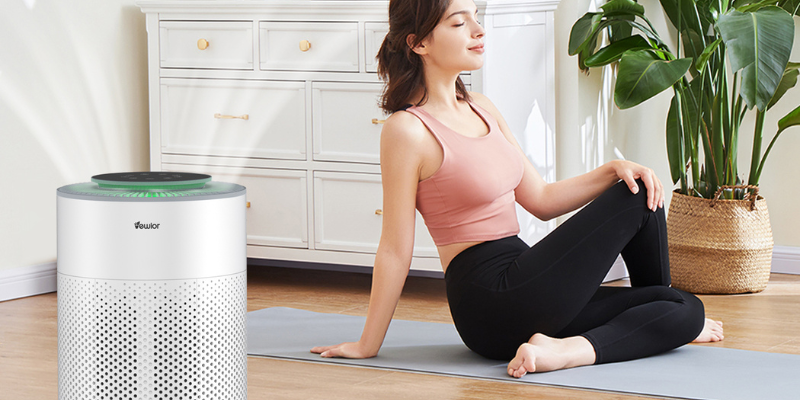
How to choose the best air purifier for your home?
When choosing an air purifier for your home, there are several factors to consider. The size of your home is one of the most important factors. You will need to choose an air purifier that is appropriately sized for the space in which it will be used. Most air purifiers come with a recommended room size, so be sure to choose one that is appropriate for the size of the room in which it will be used.
Another important factor to consider is the types of pollutants you want to remove. If you suffer from allergies or have pets, you will want to choose an air purifier that can effectively remove pet dander, dust, and other allergens. If you live in an area with high levels of pollution, you may want to choose an air purifier that can effectively remove particulate matter and other harmful pollutants from the air.
It's also important to consider the level of noise you can tolerate. Some air purifiers can be quite loud, which can be distracting or annoying, especially if you plan to use it in a bedroom or other quiet space. Look for air purifiers with low noise levels, or with adjustable fan speeds that allow you to control the noise level.
When choosing an air purifier, it's also important to look for ones with a high CADR (clean air delivery rate) and a high MERV (minimum efficiency reporting value) rating. The CADR rating measures how quickly the air purifier can remove pollutants from the air, while the MERV rating measures the filter's ability to capture small particles. A higher CADR and MERV rating means that the air purifier will be more effective at removing pollutants from the air.

The importance of regularly changing the filters in your air purifier
One of the most important aspects of maintaining the performance of your air purifier is regularly changing its filters. The frequency at which you need to change your air purifier's filters will depend on a variety of factors, including the level of pollutants in your home, the type of filter your air purifier uses, and how often you use your air purifier. Generally, it's recommended that you replace your air purifier's filters every 6-12 months, although some filters may need to be changed more frequently.
Most air purifiers use one or more types of filters to trap and remove pollutants from the air. The most common types of air purifier filters include HEPA (high-efficiency particulate air) filters, activated carbon filters, and pre-filters. HEPA filters are the most effective at removing small particles from the air, such as allergens and pollutants. Activated carbon filters are effective at removing odors and gases from the air, such as cigarette smoke and cooking smells. Pre-filters are used to trap larger particles, such as dust and pet hair, before they reach the main filter.
When it's time to change your air purifier's filters, you'll typically need to purchase replacement filters from the manufacturer. Follow the manufacturer's instructions for changing the filters, as the process may vary depending on the type of air purifier you have. In general, you'll need to turn off the air purifier, remove the old filter(s), and replace them with the new ones. Some air purifiers have indicators that will let you know when it's time to change the filters, while others will require you to check the filters manually.
Regularly changing your air purifier's filters is essential to maintaining its effectiveness. Over time, the filters become clogged with pollutants, which reduces their ability to trap and remove particles from the air. This can lead to reduced air quality in your home and can also cause your air purifier to work harder, which can increase its energy consumption and decrease its lifespan. By following the manufacturer's instructions for changing the filters and staying on top of filter maintenance, you can ensure that your air purifier continues to work effectively and efficiently for years to come.

Using an air purifier in conjunction with other methods to improve indoor air quality
Air purifiers are a great tool to improve indoor air quality, but they are not the only solution. Good ventilation is also important for removing indoor pollutants and ensuring that fresh air circulates throughout your home. This can be achieved by opening windows and doors, using exhaust fans, and allowing fresh air to flow into your home. In addition, regular cleaning can help reduce the number of pollutants in your home. This includes vacuuming carpets and upholstery, dusting surfaces, and cleaning floors. By keeping your home clean, you can reduce the amount of pollutants that accumulate over time.
Another important step in improving indoor air quality is to avoid the use of harsh chemicals. This includes cleaning products, air fresheners, and other household chemicals. These chemicals can release volatile organic compounds (VOCs) into the air, which can be harmful to your health. Instead, opt for natural cleaning products, such as vinegar and baking soda, or look for products that are labeled as "low VOC."
It's also important to consider other sources of pollution in your home, such as cigarette smoke, cooking fumes, and pet dander. If you or a family member smokes, it's best to quit or smoke outside. If cooking produces a lot of fumes, consider using an exhaust fan or opening a window. And if you have pets, make sure to groom them regularly and keep them off of furniture and other surfaces.
Conclusion
Air purifiers can play a crucial role in improving indoor air quality and creating a healthier home environment. Understanding how air purifiers work, the different types available, and how to properly maintain them can help you choose the best air purifier for your needs and ensure that it continues to operate effectively. By using an air purifier in conjunction with other methods to improve indoor air quality, you can create a comfortable and healthy living space for yourself and your family. Remember, good indoor air quality is essential for your overall well-being, so consider investing in an air purifier to help achieve it.


